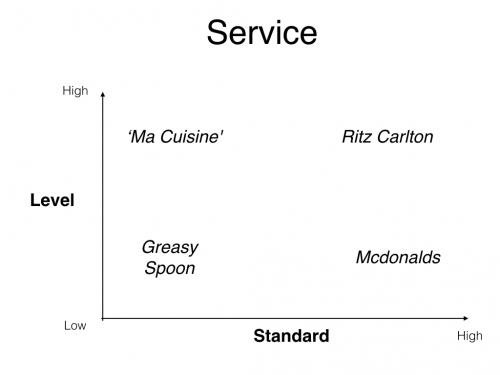
Imagine you were deprived of all feedback, no matter what you did you, had no way of knowing the outcome of your actions.
Terrifying, yes?
Without feedback, we have no possible way of improving what we do. We are flying blind. Everything we actually know how to do, we have learnt in incremental steps. Only by paying attention to the feedback have we been able to get better.
So as a leader, there are two implications to this that you need to be thinking about. And they concern you and ‘them’.
If you find yourself thinking from time to time that this or that person reporting to you could do better (and I know you have these kinds of thought from time to time because in my position as a coach and confidante of many leaders I hear this regularly), then you need to ask yourself how good a job am I doing in giving this person helpful feedback?
Oh come on, Mike…
I can sense you thinking… if you just knew how many times I have told that person that this or that is not working.
You may have told them. But is telling skillful feedback?
Not really, telling is probably the least effective tool at your disposal, yet it seems to be a tool of choice for many managers.
Sir John Whitmore, the creator of the GROW Model has a lovely video where he coaches a beginner in golf.
Notice that all he does is ask questions. What would you like to accomplish? How did that feel? What do you notice about your body? What would you like to do now? And slowly but surely, the power of the questions helps the novice golfer improve considerably in just a few minutes. Watch for yourself here.
What I find even more striking is the comparison with the other novice golfer who is being ‘told’ what to do by the more traditional instructor. The more he gets told, the stiffer and more awkward he becomes.
What is that telling us?
If you would like to see continuous improvement around you, you need to work on your feedback skills. If you feel team members could do better, that is valuable feedback to you. It tells you more about you than it does about them.
Next week, we will explore the other situation that is possibly even more terrifying than finding yourself in a black hole with no feedback. It is the situation where all the feedback you are getting is more or less fake or misleading, and that I am afraid is not as uncommon as you might think.
 You have been reading the fourth blog post in a series where Mike is exploring: Why is it important to develop not just yourself but also the people around you?
You have been reading the fourth blog post in a series where Mike is exploring: Why is it important to develop not just yourself but also the people around you?
Building capacity is at the heart of the Service Profit Chain. If you are not familiar with the intricacies of the Service Profit chain, we have a special treat for you:
For this month only, you can download Mike’s book Best! No need to be cheap if … for FREE using this coupon JLXW8P9QSE. It is only available for the first 50 people so first come first serve.







